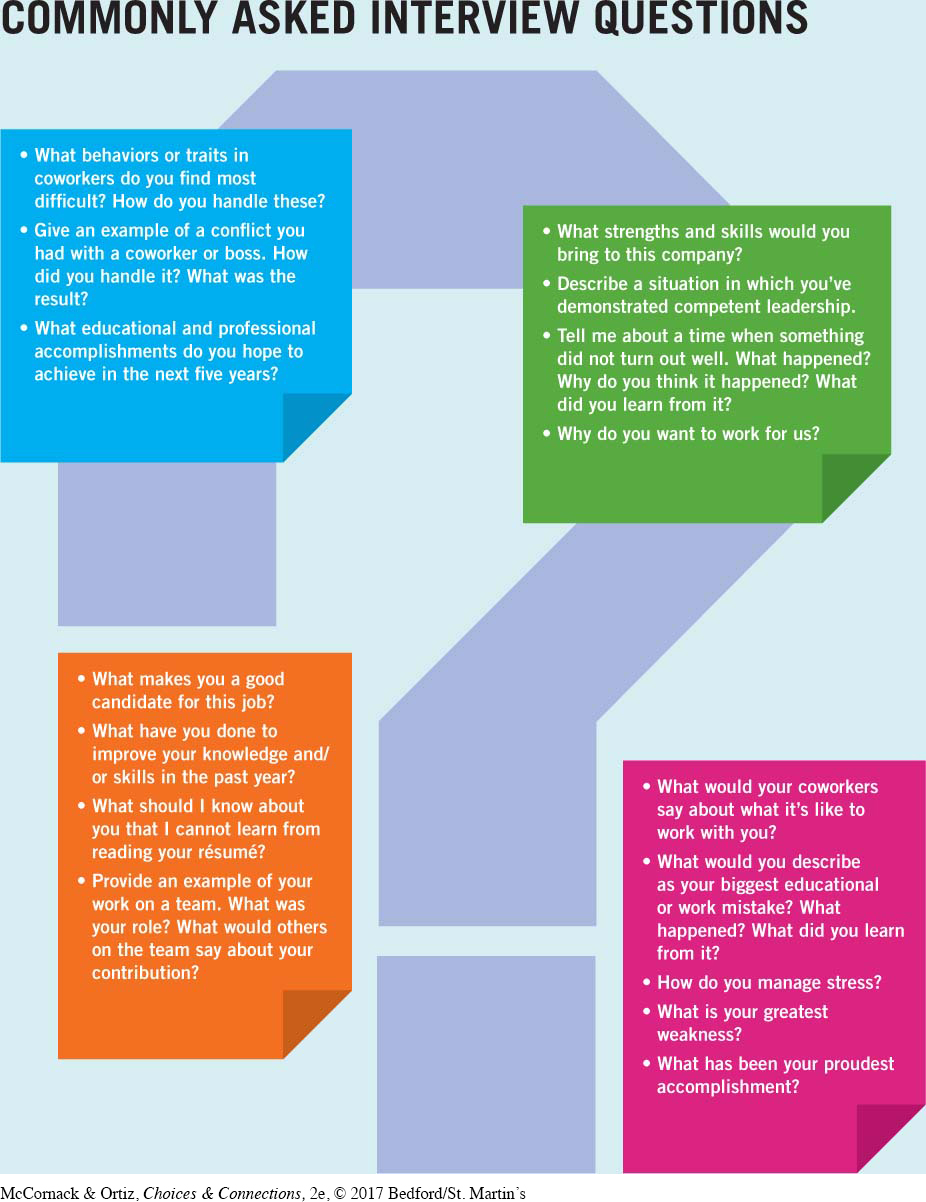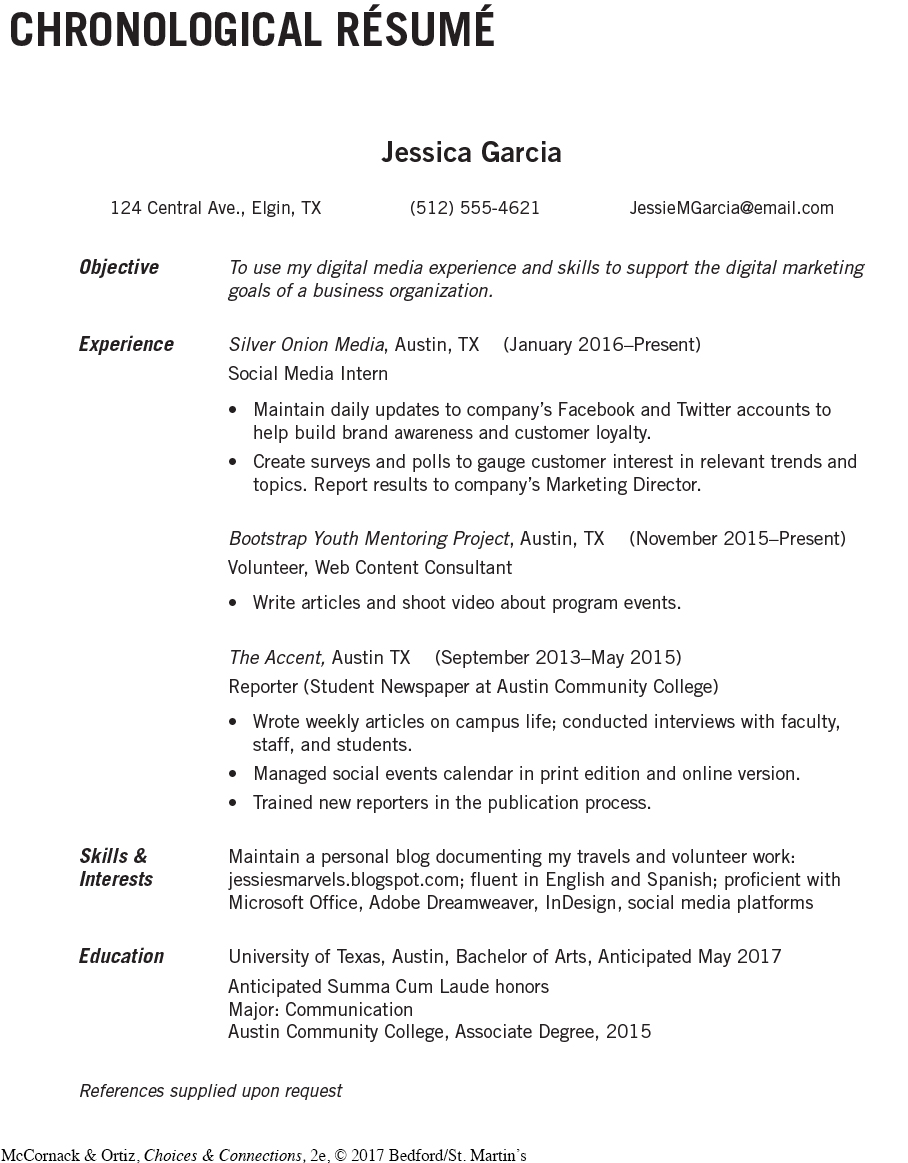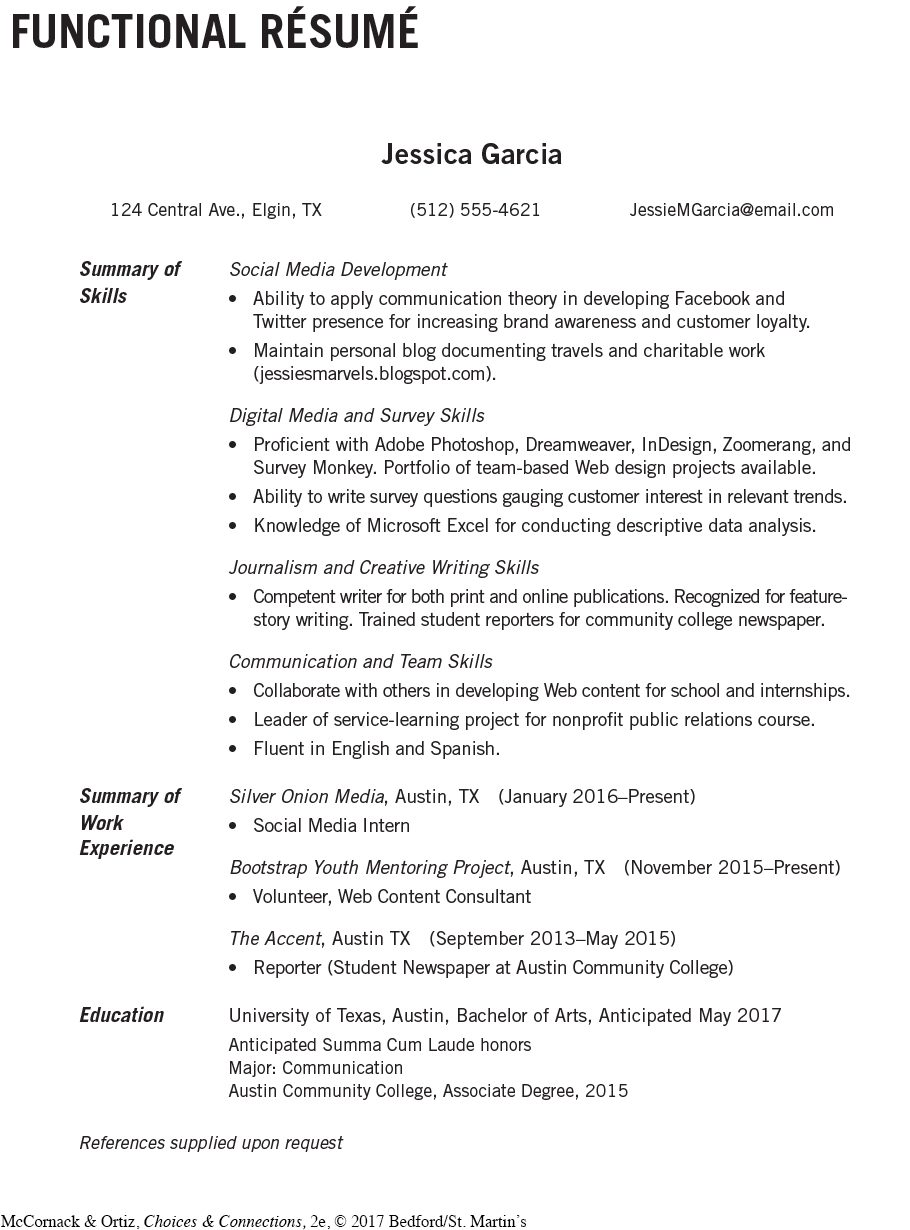Preparing for an Employment Selection Interview
Whether you are looking for an internship or your first job, seeking a promotion, applying to a different company, or considering changing careers, you will need to prepare for employment selection interviews. This includes researching potential employers, developing your résumé and cover letter, reviewing your social media image, and planning your own questions for the interviewer. To learn even more about how to prepare for a job interview, check out sites like Monster.com or CareerBuilder.com, or visit your school’s career services department.
Research Potential Employers. Learn as much as you can about the company that is interviewing you. Recruiters and hiring managers favor applicants who know something about the organization. This includes understanding what the enterprise does (what it produces and what industry it’s in) and having a sense of how the job you’re interviewing for fits into the company as a whole. Armed with this knowledge, you can speak more intelligently about how your experience and skills are a good fit for the job (Joyce, 2008).
If you saw the job listing in an advertisement or on the company’s Web site, the posting probably included a job description. If the description is vague, try to get more details—
By researching the company, you can also prepare answers to questions that may come up during an interview. For example, the interviewer will likely ask you why you’re interested in the job. “I just need a job” is not an acceptable answer; you need to explain how your experiences and skills make you a good fit for that job. (See Table A.4 for additional interview questions you should be ready to answer.) Also, think about what job-
Develop Your Résumé and Cover Letter. When you apply for a job, you typically submit a résumé. A résumé is a written summary of your education, work experience, and skills. Most employers require one of two types of résumés. The first type is the chronological résumé, which details the history of your education and work experience, beginning with the most recent. The second type is the functional résumé, which focuses on how your skills and experiences relate to the specific job you’re applying for. This information is not in chronological order. See Figures A.1 and A.2 for samples of a chronological and a functional résumé. These samples show the basic categories and types of information résumés often include. However, there are a lot of opinions on what detailed content should be covered. Some recruiters say an objective statement is no longer necessary. Some advocate for disclosing a high GPA, while others say not to include one at all. When putting together your own résumés, research what is the acceptable standard in the industry to which you are applying.
Which type of résumé is more appropriate? We recommend preparing both types. Then you can decide which one to submit, depending on the job application requirements and your work history. For example, for employers that ask for a detailed work history, a chronological résumé is better. If you have a limited work history, a functional résumé may be the right choice, because it helps you emphasize job-
Many employers now expect you to submit your résumé electronically, either as an e-




There are many good resources online that can help you create résumés, including Monster.com and Jobsearch.about.com. You can also seek support at your college’s career services department. Use these sources as well as your own research to carefully craft your application materials.
Résumés are often accompanied by a cover letter, which introduces you and highlights your qualifications for the job in question. (See Figure A.3.) Think of the cover letter as a persuasive message that expresses how your work experience and skills meet the employer’s needs. Use vivid and descriptive language to direct the reader to key areas of your résumé that showcase your qualifications. Write different cover letters for each job you apply for, tailoring each letter to the position’s specific needs. Conclude your cover letter by requesting an interview.
Remember that your résumé and cover letter are the first impression an employer will get of you as a potential employee. Make sure these documents truly convey your qualifications for the job. Ensure that they look good, too. Employers will spend just a few minutes reviewing them, so create professional-
Review Your Social Media Image. If potential employers saw your Instagram feed, Twitter feed, or Facebook account, what impressions would they form about you? Would they conclude that you’re a serious, hardworking type, or that you mostly play paintball and hang out at the beach? As Chapter 3 on mediated communication points out, you create your online face through your social media activity: your posts, your e-
Some employers check Google, LinkedIn, and social media sites to gather additional information about job applicants. They will more likely view you favorably if the images on these sites show you in a respectable setting (e.g., playing tennis rather than drinking at a party) and if others post positive comments about you (Hong, Tandoc, Kim, Kim, & Wise, 2012). Your e-
Develop Your Own Questions. Most employment selection interviewers conclude the interview by inviting the applicant to ask questions. This is another opportunity for you to demonstrate what you know about the company. Rather than saying “I can’t think of anything,” be prepared with a few questions. For example, you could ask about opportunities for advancement within the company, or inquire about some detail in the job description that wasn’t covered during the interview. Avoid questions that you could easily answer by looking at the employer’s Web site or other published material.